The Atlantic's CityLab blog has a host:
Train stations in America span all the styles of architecture this nation has to offer. There’s the the gorgeous Italianate train station in Jackson, Michigan. The Amtrak station in Raton, New Mexico, is a beautiful example of Mission Revival. Even the humble lil’ train station in Mineola, Texas, has got some flair. Whatever you might think about Orlando’s train station, it no doubt looks historic.
The stations I want to talk about are not those train stations. These are not the Art Deco transit hubs that look like vintage monuments to the future, or the Spanish Colonial stations that summon visions of desperados waiting for a train. These are the other train stations—the ones that make you wish you’d left the house a little later so you’d have to spend that much less time waiting at the station.
Warning: truly depressing train station photos follow. And depression, according to a new meta-analysis, damages your brain. So after looking at these photos, go for a walk, and then write your member of Congress to restore funding to Amtrak.
One step in the Inner Drive Technology World Headquarters move this weekend was to get my Internet connection turned on at my new place. Unfortunately this meant moving the modem from the old place, so I will have only a little bit of Internet this weekend, if any. I still have a bunch of photos to post.
Meanwhile, I wanted to post some context. Here is the map of where Google thought my phone was last week; it's remarkably accurate:

Here's the same data constrained to Wednesday through Friday:
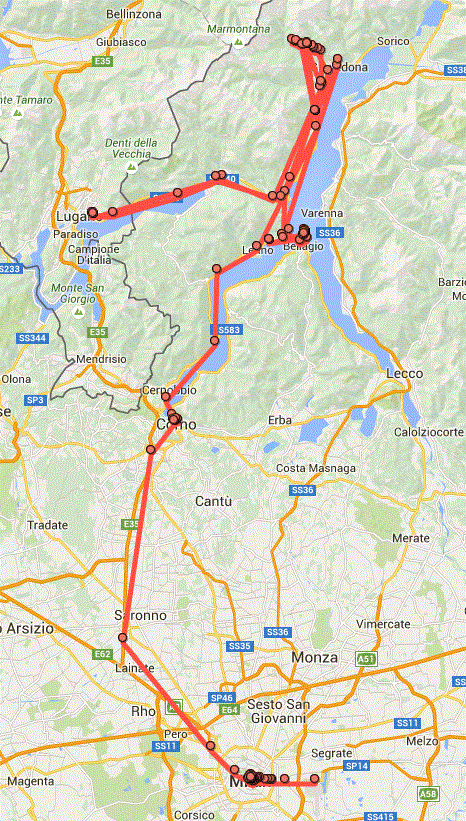
I have a few thoughts about Google Location Services, but none that I'm going to share as I'm trying to leave the office right now to get to Ribfest. And to pick up my dog, who's with his new pack.
All of this comes after getting a major project moved from "nice to have" to "must have by Monday." Because why wouldn't I want to create a major policy document over the weekend I'm moving when I'll have almost no Internet connectivity?
Part of the reason one stays in an Agriturismo is to go hiking. This is a state highway (scala provincale) near the closest village:
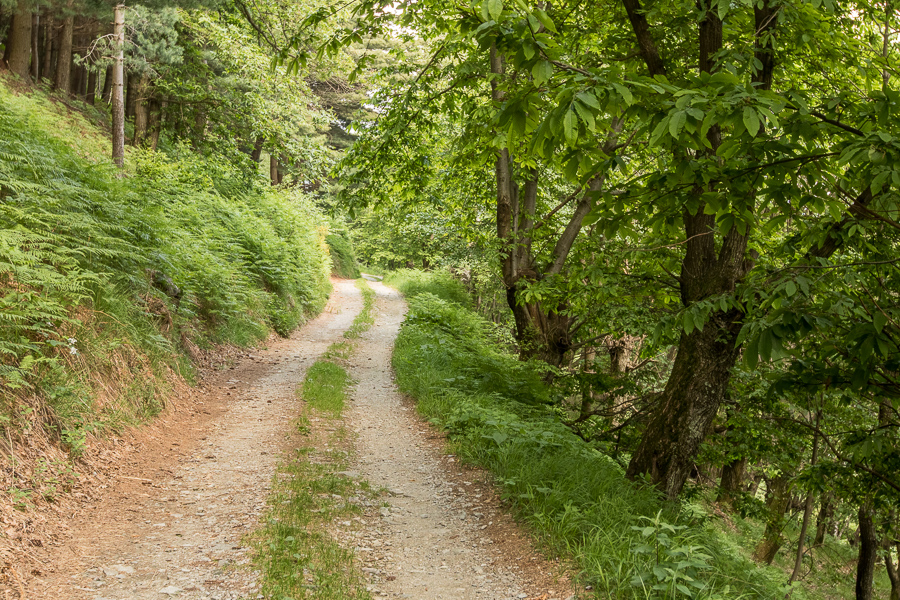
Despite being as far north (46°27') as Quebec City and Portland, Ore., Dosso del Liro is surprisingly warm and dry, the perfect environment for these guys, which we saw all over:

These guys (common Italian wall lizards) are about 8 cm nose to tail, and very fast. We didn't even try to catch them. But they're also hard to photograph; I got lucky and moved very slowly for this shot.
I'm in a remote area with slow Internet for the next couple of days. You will see photos, and descriptions, and probably Yelp reviews coming up...but for today and probably a lot of tomorrow, less so. (Click on the globe icon below for some insight.)
It turned out, visiting Venice for only one day worked exactly right. More on that, too, as time warrants.
The Southampton Arms remains my favorite pub in London, but The Blackbird comes in a close second:
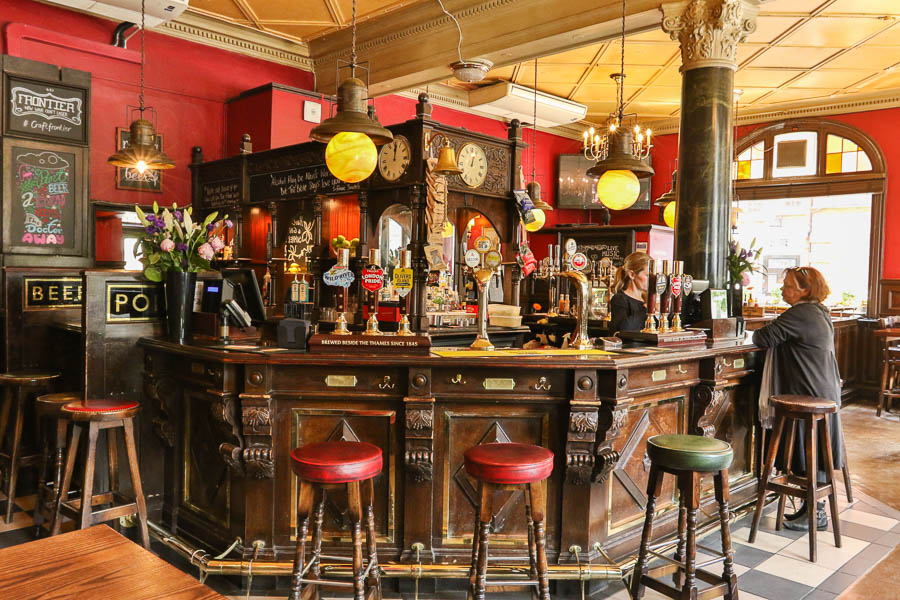
I wound up having breakfast and dinner there yesterday, followed up with drinks at a suburban-feeling club down the block. (Maybe not suburban; more like bridge-and-tunnel.)
Now I'm at Gatwick waiting for my next flight to phase II of this trip: Venice. So far the flight is only delayed 40 minutes. And I may have figured out the Lightroom problem, or at least found a workaround. More on all of this later tonight or tomorrow.
You know, it sucks to be Greece right now, and Germany is really screwing itself by not negotiating with them. But as an American tourist about to visit the continent, this is a nice thing to see (particularly after the bump earlier in the month):

This doesn't completely suck, either (I'm stopping in London on the way):

Via reader EB, a Chicago Magazine article from 1980 wonders where the gentrification really is (because it was 20 years in the future):
Thus it was that Yuppies began regentrifying poverty areas along the lakefront, such as Lincoln Park, Old Town, New Town, Lakeview, and Uptown. As population expert Pierre de Vise has noted, these singles are able to establish beachheads in “the buffer zones separating the Gold Coast from the slum” because the singles are less concerned with poor schools and street crime than middle-class families. The families, which had been fleeing to the suburbs since about 1950, continued to flee—would you send your child to a Chicago public school? Between 1970 and 1975 alone, the number of white households in Chicago with children dropped from 488,000 to 447,000, a loss of 41,000 households and the biggest drop in any category of the Census Bureau’s housing survey. Nevertheless, the arrival of the Yuppies was the first spontaneous evidence of new urban life in 30 years, and so the “urban renaissance” was hastily proclaimed.
But the word “renaissance” usually implies a cultural rebirth pervading all of society. The renaissance in Chicago has, in fact, been limited to a few oases. Of the 30,000 new housing units constructed in Chicago between 1970 and 1975, nearly half are concentrated in just 28 of the city’s 840 census tracts; as you might have guessed, all 28 of those tracts are on or near the lakefront.
Despite the frantic real-estate activity along the lakefront today, a 1975 study by Pierre de Vise turned up entire neighborhoods—mostly in black ghettos or blue-collar areas—where there hadn’t been a single conventional house sale all year; virtually all of the conventional mortgage sales, de Vise found, were restricted to the North and Northwest sides, the Far Southwest Side, and lakefront houses and condominiums.
Only, the hated Yuppies moving into those communities actually did reduce crime and improve schools, but also drove out minorities and the poor. Chicago today would be unrecognizable to people from 1980. In fact, people in my own family who moved away from Chicago in the 1970s cannot comprehend $500,000 condos at Wells and Division, nor walking alone through Oz Park after dark. And they certainly would never send a child to Lincoln Park High School.
We've got a long way to go to have a truly sustainable city, but we're on the right track (despite pensions). I'm glad to be living here now.
I'm not sure this produced a significantly different photo, but I've done another quick HDR image with Lightroom. First, the basic shot, posted the day after my visit to the Joint Security Area on the North-South Korean border:
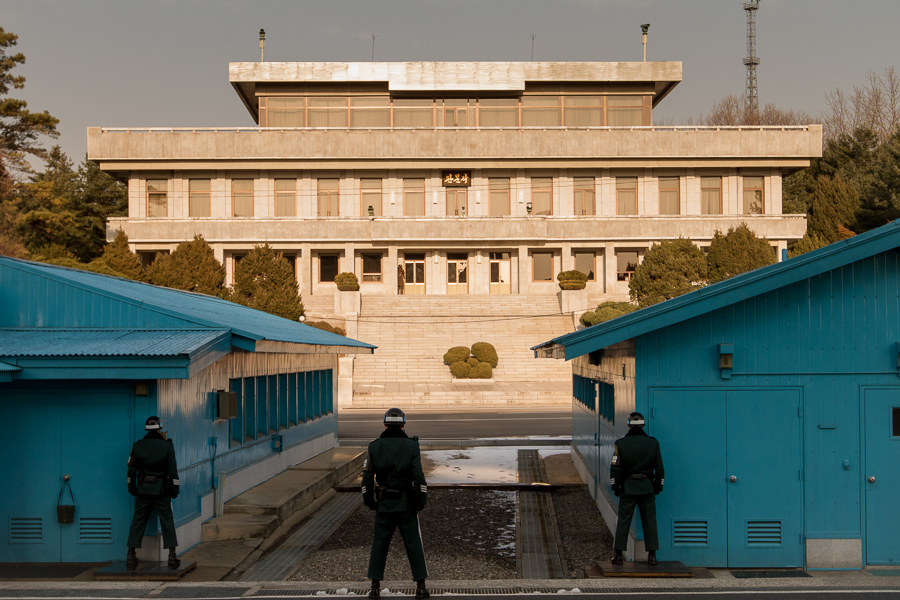
Here's the first HDR attempt posted a week later:

And here's one with Lightroom 6:
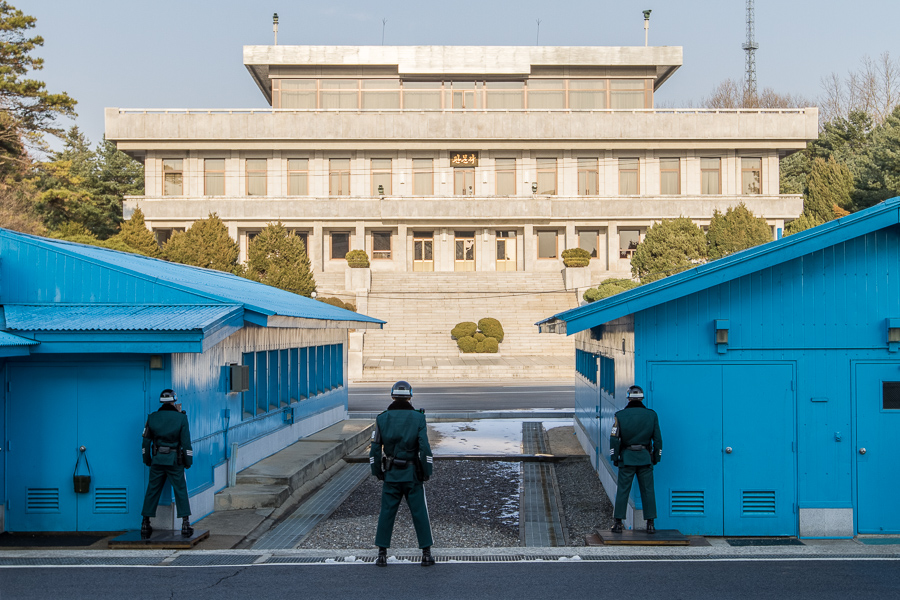
The second HDRI used different source images, but only from a few seconds later. Are they significantly different? Maybe insignificantly? I must ponder...
WBEZ's Curious City has the story:
Every town that folded into Chicago, from Lake View to Hyde Park, had its own system for naming and numbering streets. Some towns counted out addresses starting from the Chicago River, while others started from Lake Michigan. Some placed even numbers on the north side of the street, others put them on the south. Some even let developers choose their own street names or numbers if there wasn’t a lot of local opposition.
Edward Paul Brennan was a delivery boy for his father’s grocery store, and later a bill collector for the music company Lyon & Healy. He was so frustrated with the chaos of Chicago’s address system that in 1901 he came up with his own. But it would take him years to get it implemented.
Beginning in the 1890s he started a scrapbook, collecting newspaper articles about problems with city navigation or delays due to address confusion. Articles had headlines like “Streets in a Tangle. Visitors Lost.” One report tells about a doctor who couldn’t find a patient during a house call emergency.
Today, Chicago addresses increase by 100 per block, 800 per mile. (Miles are significant because of the way land is surveyed in Illinois.) It's an easily-understood system that makes it hard to get lost in the city.
Via Citylab, the clearest explanation yet for why subways have delays, courtesy NYMTA: